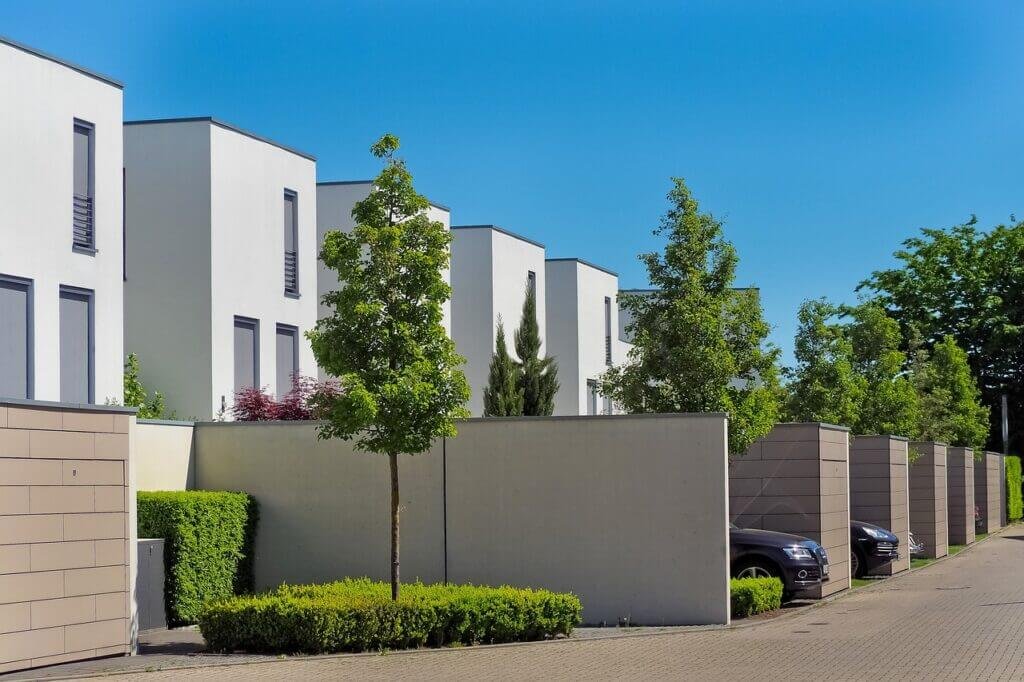Living in a high-rise building doesn’t mean you have to miss out on the joys of cultivating your own vegetables and herbs. With a little creativity and some simple techniques, you can transform your urban space into a thriving indoor garden. This article will provide you with all the necessary tips and tricks to ensure successful cultivation, from selecting the right plants to setting up your indoor garden and providing proper care. Get ready to embark on a green journey right in the comfort of your own high-rise apartment!

Choosing the Right Vegetables and Herbs
Consider the Available Space
When growing vegetables and herbs indoors in a high-rise building, space can be limited. It’s important to consider the available space you have before selecting which plants to grow. Depending on the size of your indoor area, you may need to prioritize smaller plants or those that can be grown vertically to maximize space.
Select Vegetables with High Yields
Since indoor gardening typically involves limited space, it’s a good idea to choose vegetables that have high yields. This means selecting plants that produce a large amount of food in a relatively small space. Examples of high-yield vegetables that are suitable for indoor gardening include cherry tomatoes, salad greens like lettuce and spinach, and herbs like basil and cilantro.
Prefer Small or Dwarf Varieties
Another consideration for indoor gardening in a high-rise building is to choose small or dwarf varieties of vegetables and herbs. These varieties are specifically bred to be compact and take up less space while still producing a good yield. For example, cherry tomato plants that are dwarf or determinate varieties are ideal for indoor gardening due to their compact growth habit.
Choose Herbs that Thrive Indoors
When selecting herbs for indoor gardening in a high-rise building, it’s important to choose varieties that thrive in an indoor environment. Some herbs are better suited to the low light and controlled conditions found indoors. Examples of herbs that do well indoors include mint, parsley, chives, and thyme. These herbs are known to tolerate lower light levels and are a great addition to any indoor garden.
Providing Adequate Lighting
Understanding Light Requirements
Light is one of the most crucial factors in successful indoor gardening. Different plants have varying light requirements, so it’s essential to understand the specific needs of the vegetables and herbs you choose. Some plants, such as leafy greens, can tolerate lower light levels, while others, like tomatoes, require more intense light.
Utilizing Natural Light Sources
In a high-rise building, natural light may be limited, especially if your indoor garden is located away from windows. However, if possible, try to position your plants near windows that receive the most sunlight. South-facing windows generally provide the most light throughout the day. You can also rotate your plants regularly to ensure they receive even light exposure.
Supplementing with Artificial Lighting
In cases where natural light is inadequate, supplementing with artificial lighting becomes necessary. LED grow lights are a popular choice for indoor gardening as they provide the right spectrum of light needed for plant growth. When using artificial lighting, it’s important to position the lights at the correct distance from the plants to ensure they receive adequate light without burning the leaves.
Setting Up Grow Lights
When setting up grow lights for your indoor garden, it’s important to consider the specific needs of each plant. Different species may require different light intensities, so it’s important to research the individual requirements of your chosen vegetables and herbs. Be sure to follow the manufacturer’s instructions when setting up your grow lights to ensure optimal growth and to avoid any potential safety hazards.

Creating an Optimal Growing Environment
Controlling Temperature
Maintaining a suitable temperature is crucial for the success of your indoor garden. Most vegetables and herbs prefer temperatures between 60-75°F (15-24°C). Avoid placing your plants near extreme temperature sources like air conditioning vents or drafty windows. Keeping the temperature within this ideal range will help ensure healthy and vigorous growth.
Maintaining Humidity Levels
Indoor environments can often have low humidity, especially in high-rise buildings with air conditioning or heating systems. Many plants thrive in moderate humidity levels between 40-60%. To increase humidity, you can use a humidifier or place a tray of water near your plants to promote evaporation. Alternatively, grouping plants together can create a microclimate with higher humidity levels.
Optimizing Air Circulation
Air circulation is vital for indoor gardening, as it helps prevent the growth of mold and mildew and encourages stronger plant growth. Ensure there is adequate air movement around your plants by using fans or opening windows if possible. Avoid placing plants too close together, as this can restrict airflow and increase the risk of disease.
Avoiding Drafts and Extremes
While it’s important to maintain air circulation, it’s equally important to protect your indoor garden from drafts and extreme temperatures. Avoid placing your plants in areas where they are exposed to drafts from open windows or doors. Additionally, keep your plants away from heating vents or anything that could cause extreme temperature fluctuations, as this can stress or damage the plants.
Selecting the Right Containers and Soil
Choosing the Appropriate Containers
Selecting the right containers is crucial for indoor gardening in a high-rise building. Consider the size and depth of the containers based on the plants’ root systems and how much space you have available. Opt for containers with drainage holes to allow excess water to escape, as excessive moisture can lead to root rot.
Understanding Drainage Needs
Good drainage is essential to prevent waterlogged soil, which can cause root rot and other issues. When choosing containers, ensure they have drainage holes or add them yourself if necessary. You can also place a layer of gravel or small stones at the bottom of the container before adding the soil to improve drainage.
Using Quality Potting Mix
Using a high-quality potting mix is vital for the success of your indoor garden. Avoid using garden soil, as it can be heavy and may contain pests, diseases, or weed seeds. Instead, opt for a well-draining potting mix specifically formulated for container gardening. These mixes are usually lightweight, well-aerated, and contain added nutrients to support healthy plant growth.
Considering Soil Amendments
Depending on the specific needs of your plants, you may need to consider soil amendments to optimize growing conditions. For example, adding organic matter like compost can improve soil structure and fertility. Some herbs, such as rosemary and lavender, prefer well-draining soil with good airflow, so adding perlite or coarse sand can help achieve the right consistency.

Watering and Fertilizing Techniques
Determining Watering Frequency
Proper watering is crucial for indoor gardening success. Each plant has different water requirements, so it’s important to determine the ideal watering frequency. Be mindful not to overwater or underwater your plants. As a general rule, it’s better to underwater than overwater, as most plants are more prone to root rot caused by excessive moisture.
Using Proper Watering Methods
To ensure proper watering, use appropriate methods such as the “soak and dry” technique. This involves thoroughly watering the plants until the excess water drains out from the bottom of the container. Allow the top inch or two of soil to dry out before watering again. It’s also essential to use room temperature water to avoid shocking the roots.
Choosing the Right Fertilizers
Indoor plants typically require regular fertilization to ensure they receive adequate nutrients. It’s important to choose the right type of fertilizer for your vegetables and herbs. Organic fertilizers are a popular choice as they provide slow-release nutrients and improve soil quality over time. Alternatively, you can opt for water-soluble fertilizers specifically formulated for indoor plants.
Applying Fertilizers Correctly
When applying fertilizers, it’s crucial to follow the manufacturer’s instructions to avoid overfertilization, which can lead to nutrient burn or other issues. Liquid fertilizers are commonly applied during the watering process, while granular fertilizers can be worked into the soil or used as a top dressing. Regularly monitor your plants for signs of nutrient deficiencies or excesses and adjust the fertilization accordingly.
Managing Pest and Disease Control
Identifying Common Indoor Pests
Indoor gardens can still be susceptible to pests, even in a high-rise building. Common pests that can affect indoor plants include aphids, mealybugs, spider mites, and fungus gnats. Regularly inspect your plants for any signs of pests, such as visible insects, sticky residue, or distorted leaves.
Implementing Preventive Measures
Prevention is key when it comes to managing pests in indoor gardening. To minimize the risk of infestations, practice good hygiene by regularly cleaning your indoor gardening area and removing any dead or decaying plant material. Quarantine new plants before introducing them to your existing collection to ensure they are pest-free.
Using Organic Pest Control Methods
When dealing with pests in indoor gardening, it’s often best to start with organic pest control methods. These methods minimize the use of harsh chemicals and are generally safer for both you and your plants. Examples of organic pest control methods include manually removing pests, using insecticidal soaps or oils, or introducing beneficial insects like ladybugs to control pest populations.
Managing Diseases in Indoor Gardening
Disease management is essential for maintaining healthy plants indoors. To prevent the spread of diseases, avoid overwatering, provide proper air circulation, and maintain clean gardening practices. If you notice signs of disease, such as wilting, leaf spots, or fungal growth, promptly remove affected plant parts and consider using organic disease control methods like copper sprays or neem oil.
Monitoring and Maintaining Plant Health
Regularly Checking for Signs of Stress
Regular monitoring is essential to catch any signs of stress in your indoor plants. Keep an eye out for yellowing or browning leaves, wilting, stunted growth, or any other abnormal symptoms. Catching and addressing these issues early can prevent further damage and help maintain healthy plant growth.
Pruning and Trimming
Pruning and trimming your indoor plants are essential maintenance tasks that promote healthier and bushier growth. Remove any dead, diseased, or yellowing leaves to prevent the spread of diseases and enhance the plant’s overall appearance. Additionally, pruning can help manage plant size and encourage better light penetration.
Supporting Plant Growth
Some indoor plants, particularly those that produce fruits or heavy foliage, may require additional support to prevent them from toppling over. Use plant stakes, trellises, or cages to provide support and maintain the plant’s upright growth. Supporting your plants will also help prevent damage to the stems and ensure proper air circulation around the foliage.
Preventing Overcrowding
To prevent overcrowding in your indoor garden, regularly divide or repot your plants as they grow. Overcrowding can lead to competition for light, water, and nutrients, resulting in stunted growth or an increased risk of pests and diseases. Dividing and repotting your plants will give them adequate space to thrive and ensure the overall health of your indoor garden.
Harvesting and Preserving Your Indoor Crop
Determining Optimal Harvest Time
Knowing when to harvest your indoor crops is crucial to ensure the best flavor and quality. Each vegetable and herb has specific signs that indicate optimal harvest time. For example, tomatoes should be harvested when they are fully ripe and have a rich color, while leafy greens can be harvested when the outer leaves are large enough to be picked.
Harvesting Techniques
When harvesting your indoor crops, use clean and sharp tools, such as scissors or pruners, to prevent any damage to the plant. Harvest leafy greens by cutting the outer leaves, allowing the center to continue growing. For herbs, cut the stems above the node to encourage bushier growth. With fruits like tomatoes, gently twist or cut the stem to remove them from the plant.
Storing and Preserving Fresh Produce
Once harvested, it’s important to store your fresh produce properly to maintain its quality and flavor. Some vegetables can be stored in the refrigerator, while others, like herbs, are better stored at room temperature or in water. Wrap leafy greens in damp paper towels and place them in a sealed plastic bag to prolong freshness. Use fresh produce within a few days for the best taste.
Drying and Freezing Herbs
To preserve herbs for later use, drying or freezing is the most popular method. Air drying is suitable for herbs like basil, thyme, and rosemary. Hang the herbs upside down in a well-ventilated area away from direct sunlight until they are completely dry. Freezing is another option, especially for herbs like parsley and cilantro. Chop the herbs and freeze them in ice cube trays with a little water or olive oil.
Tips for Success in Indoor Gardening
Providing Adequate Plant Support
As mentioned before, providing adequate plant support is crucial for successful indoor gardening. Whether it’s using stakes, trellises, or cages, supporting your plants will help prevent damage and maintain their upright growth. This is especially important for heavy-fruited plants like tomatoes or climbing plants like beans.
Rotating Plants for Balanced Growth
Rotating your plants periodically can help ensure all sides receive equal amounts of light and prevent the plants from leaning or reaching towards the light source. By rotating your plants every few days, you encourage even and balanced growth, preventing any side from becoming weak or straggly.
Maintaining a Clean Growing Area
Maintaining a clean and hygienic growing area is essential for preventing pests, diseases, and other issues. Regularly clean your indoor garden area by removing dead leaves, debris, and any build-up of dust or dirt. This will discourage pests and create a healthier environment for your plants.
Observe and Document Plant Progress
Observing and documenting your plant’s progress can help you identify any potential issues early on and make necessary adjustments. Take note of any changes in growth, leaf color, or pest and disease presence. Keeping a gardening journal or taking pictures can serve as a valuable reference for future indoor gardening endeavors.
Troubleshooting Common Issues
Dealing with Nutrient Deficiencies
Nutrient deficiencies can manifest in various ways, including yellowing leaves, stunted growth, or leaf discoloration. Most nutrient deficiencies can be addressed by adjusting your fertilization routine or using specific fertilizers formulated to address the lacking nutrient. Regularly monitor your plants for any signs of nutrient deficiencies and take appropriate action.
Managing Overwatering and Underwatering
Overwatering and underwatering are common issues in indoor gardening. Overwatering can lead to root rot, while underwatering can cause wilting and poor growth. It’s important to strike a balance by watering your plants thoroughly but allowing the soil to partially dry out between waterings. Monitor the moisture level of the soil and adjust your watering routine accordingly.
Addressing Yellowing Leaves
Yellowing leaves can indicate multiple issues, including nutrient deficiencies, overwatering, or pests. Evaluate the overall condition of the plant, including the soil moisture level and presence of pests. Adjust your watering and fertilization routine if necessary and remove any affected leaves to prevent further spread of the issue.
Combatting Common Pests and Diseases
Indoor plants can still be prone to pests and diseases. If you notice any signs of pests or diseases, promptly identify the issue and take appropriate action. Use organic pest control methods, such as insecticidal soaps, neem oil, or beneficial insects, to manage pest populations. For diseases, remove affected plant parts and consider using organic disease control methods, like copper sprays.
With proper care and attention to the specific needs of your chosen plants, you can successfully grow a variety of vegetables and herbs indoors in a high-rise building. Remember to consider the available space, provide adequate lighting, create an optimal growing environment, select the right containers and soil, water and fertilize appropriately, manage pests and diseases, monitor plant health, and harvest and preserve your indoor crops. By following these guidelines and incorporating the tips for success, you’ll be well on your way to enjoying a thriving indoor garden filled with fresh, homegrown produce. Happy gardening!


